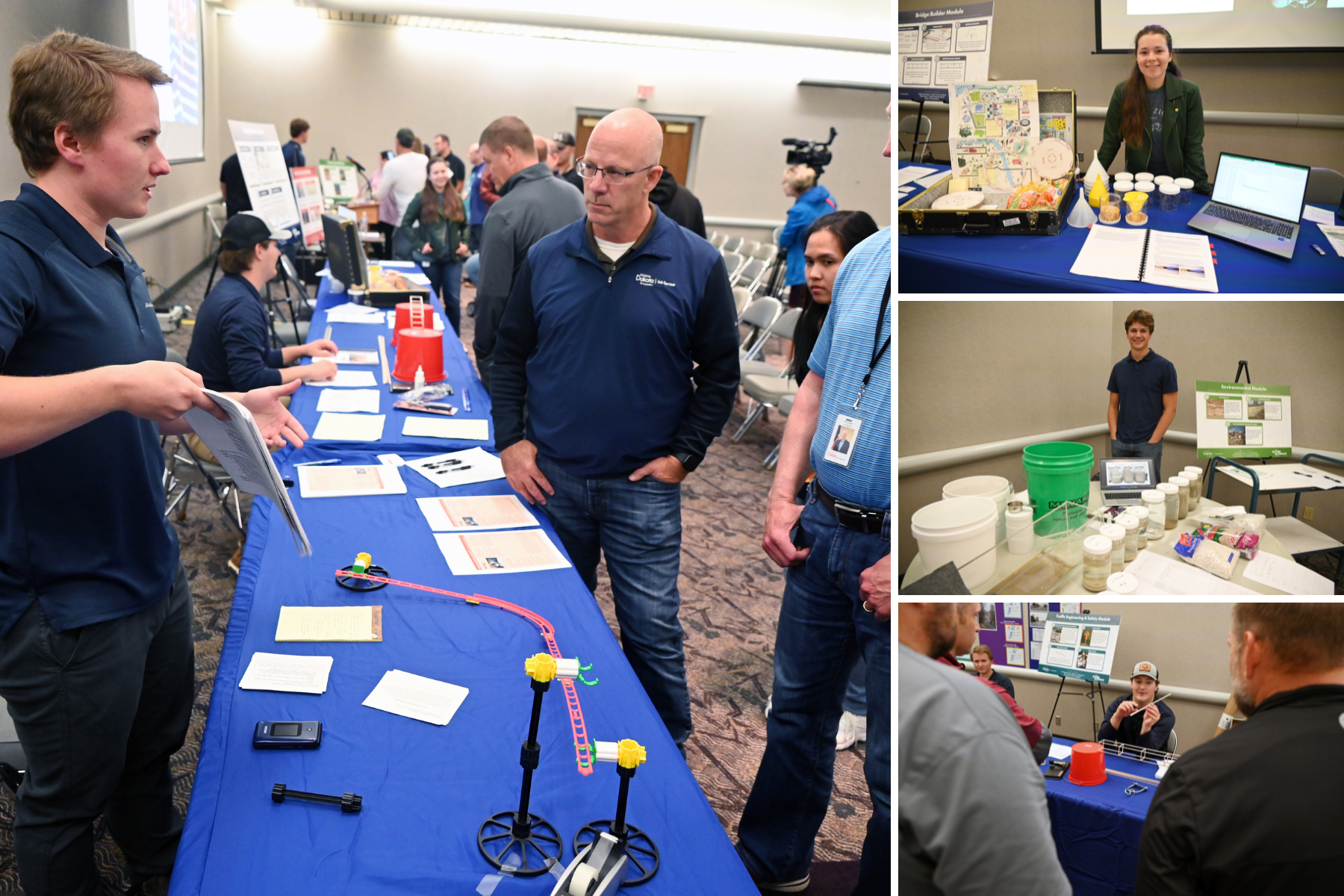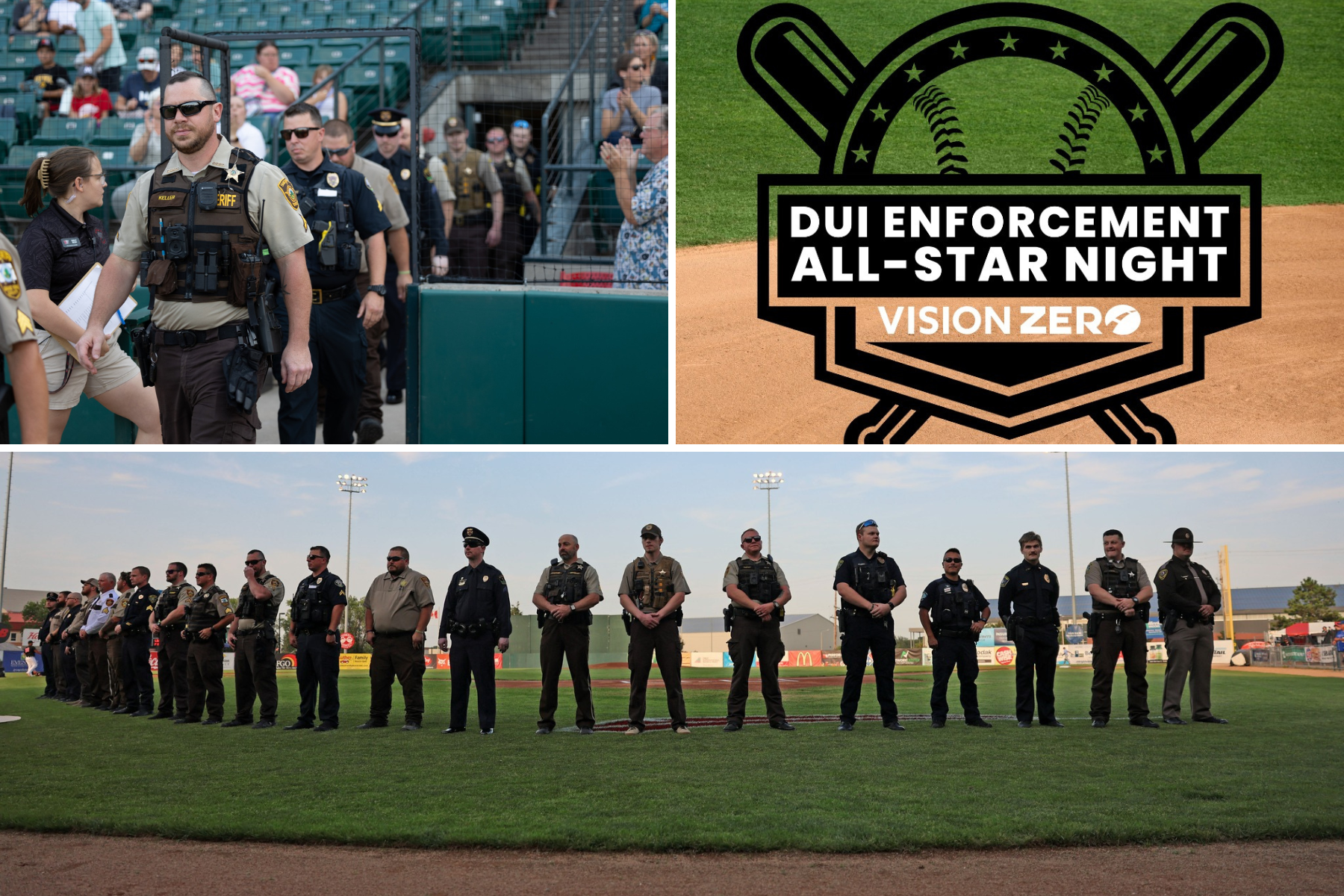
Welcome to the On the Move newsletter, your gateway to the latest developments and initiatives brought to you by the North Dakota Department of Transportation. Whether you're a commuter, a contractor, or simply interested in the future of mobility, our newsletter keeps you updated on infrastructure projects, safety measures, and innovative technologies shaping the way we move.
September 2024 Edition
New STEM program promotes transportation careers
NDDOT has launched a new science, technology, engineering, and mathematics (STEM) program to inspire high school students to explore careers in transportation and civil engineering.
Called “STEM Outreach Solutions,” the program is designed for grades 9-12 and offers hands-on activities that focus on real-world engineering work that aligns with national STEM standards. The program features engaging lessons on bridge design, design and construction, environmental engineering, and traffic engineering and highway safety. Best of all, it’s available to schools at no cost.
“STEM education is very important for the future of our transportation system,” said NDDOT Director Ron Henke. “We are excited for this program to get started and are looking forward to partnering with local schools in North Dakota to promote transportation careers.”
Teachers will lead the activities in classrooms. NDDOT and consultant engineers will visit schools to speak with students, lead hands-on activities, and emphasize the importance of math and science in these careers.
For more information, visit the AASHTO website or email Mary Grund.

Bridge inspections are vital to a healthy transportation system
North Dakota has more than 4,800 bridges that NDDOT and contractors inspect regularly
How many times in your life have you crossed a bridge without a second thought? Bridge failures, although extremely rare, are spectacular tragedies than often cost lives and captivate the nation’s attention. But with quality inspections, these disastrous events can be prevented.
NDDOT’s Bridge Division administers an inspection program to monitor the state’s bridge conditions. Routine inspections are considered essential to ensure public safety, maintain infrastructure quality, and minimize risks.
Bridge inspections are governed by federal standards known as National Bridge Inspection Standards (NBIS). The NBIS contains a list of rules -- commonly referred to as “the 23 metrics.” The data we collect in routine inspections using the 23 metrics guides us in planning and prioritizing improvements, as well as determining if a bridge’s current load-carrying capacity is safe or needs review.
Routine and other types of inspections
When a bridge (or structure, as we call them internally) is built, the first inspection sets the baseline for all future inspections. Usually, structures are inspected on a bi-annual schedule but if areas of concern are identified at any time, follow-up inspections may occur sooner. Frequency and type of inspections also depend on factors such as bridge type, design, materials, age, location, and condition.
In addition to routine inspections, there are other types of inspections performed on a bridge during its lifespan, including:
- NSTM inspections (to evaluate steel elements)
- Underwater inspections (using commercial divers)
- Special inspections (regular monitoring of a known or suspected deficiency)
- In-depth inspections (focuses on a specific portion of a bridge, not the whole structure)
- Scour monitoring inspections (measures sediment levels at bridge abutments or piers in riverbeds)
- Damage inspections (a non-routine inspection of a structure that is conducted immediately after a crash on or under a bridge)
How we do it
Many different tools can be used to identify, confirm, and quantify conditions that are undetectable by a visual inspection alone. We use a mobile platform to document findings. In addition, inspections are sometimes supplemented using Unmanned Aerial Vehicles (known as UAVs or drones). This helps minimize interruptions to traffic, creates efficiencies and increases both public and employee safety.

If we identify a serious issue on a bridge, an inspector has the authority to close all or part of the structure until the problem can be fixed. This is important to make the bridge safe for travel again. All issues are recorded through photos and/or video. Larger bridge inspections can sometimes produce more than 600 photos!
Load capacity
As bridges age, they may not have the load carrying capacity for which they were originally designed. This is why we “post” or place restriction signs for certain loads, called “legal loads.” Legal loads are regulated by the Federal Highway Administration (FHWA) and individual DOTs. Legal loads refer to the maximum allowable weight that vehicles can carry to comply with regulations. Some older bridges in good condition may still need to be posted because larger, heavier modern vehicles produce more stress on a bridge than vehicles of the past. Bridges designed and built today can sustain larger loads.
Bridge inspectors play a key role in keeping our transportation system safe for the traveling public. Our Bridge Division relies on the cooperation of our eight Districts for traffic control and inspection assistance. We appreciate everyone’s help in accomplishing inspections in a safe and effective manner. This important work allows all of us at NDDOT to continue our mission of safely moving people and goods each and every day.
We love Team NDDOT!
A client who had a great experience in the Fargo Driver License office wanted to make sure we heard and sent in this glowing note:
"I would like to pass along my experience with an employee (Dan Hillerson) and the Fargo MV office. I came to my appointment to renew my license completely unprepared. Dan went above and beyond to help make sure I could track down everything I needed to obtain a REAL ID, despite my embarrassment over the situation and offers to just leave and come back again. If more people were like Dan, the world would be a better place.” – Anthea V.
Big thanks to Dan and to the many others whose kind deeds and top-notch customer service might not always be celebrated. We appreciate you!
Have you gotten your REAL ID? New rules go into effect on May 7, 2025. Find more information on the REAL ID webpage.

Vision Zero honors top DUI enforcers in eastern ND
Vision Zero partnered with the Fargo-Moorhead RedHawks baseball team and Luther Family Ford to host a DUI Enforcement All Star Night on Tuesday, Aug. 13.
In North Dakota over the last five years, there has been an average of 38 alcohol-related traffic deaths and 393 alcohol-related injuries each year. DUI enforcers across the state are working hard to eliminate these fatalities and injuries by pulling impaired drivers off our roadways. In 2023, there were 5,591 DUIs in North Dakota; those include offenses both under the influence of alcohol and drugs.
A total of 21 law enforcement officers were recognized at the beginning of the RedHawks game as well as throughout via announcements and an in-game video. This event was part of the Drive Sober or Get Pulled Over enforcement campaign that took place from Aug. 16 – Sept. 2. Vision Zero hopes to expand this event to other ballparks across the state in 2025.
Thank you DUI enforcers!

After internships end, some join NDDOT on a full-time basis
Each year NDDOT works with colleges and universities to give students opportunities to learn and grow their skills by working on real projects. Internships are typically 12-week sessions and can happen at any time of the year.
NDDOT has had interns in nearly every division, at the main office and in each district. Some of them go on to full-time employment at NDDOT.
Austin Barchenger is one of those interns-turned-employee.
“I did a couple of different things,” he said about his multiple student experiences. “I started in Materials and Research right out of high school. I worked at DOTSC in Fargo (the DOT Support Center at NDSU), and then I did a summer with the district and worked with Bridge (division) until graduation.”
Austin attended NDSU in Fargo and is a 2024 graduate of the University of Mary. He now works full-time as a transportation engineer in the Bridge Division.
Although he had some inside inspiration – his dad, Ray Barchenger, works in Environmental and Transportation Services (ETS) so he’s heard work stories going way back – Austin said he did his own research and found himself enjoying the line of work.
“I really like the flexibility,” he says of NDDOT. “They allowed me to do my schooling while working part-time. In the summer I could work full-time and it was easy to hit the ground running.”

